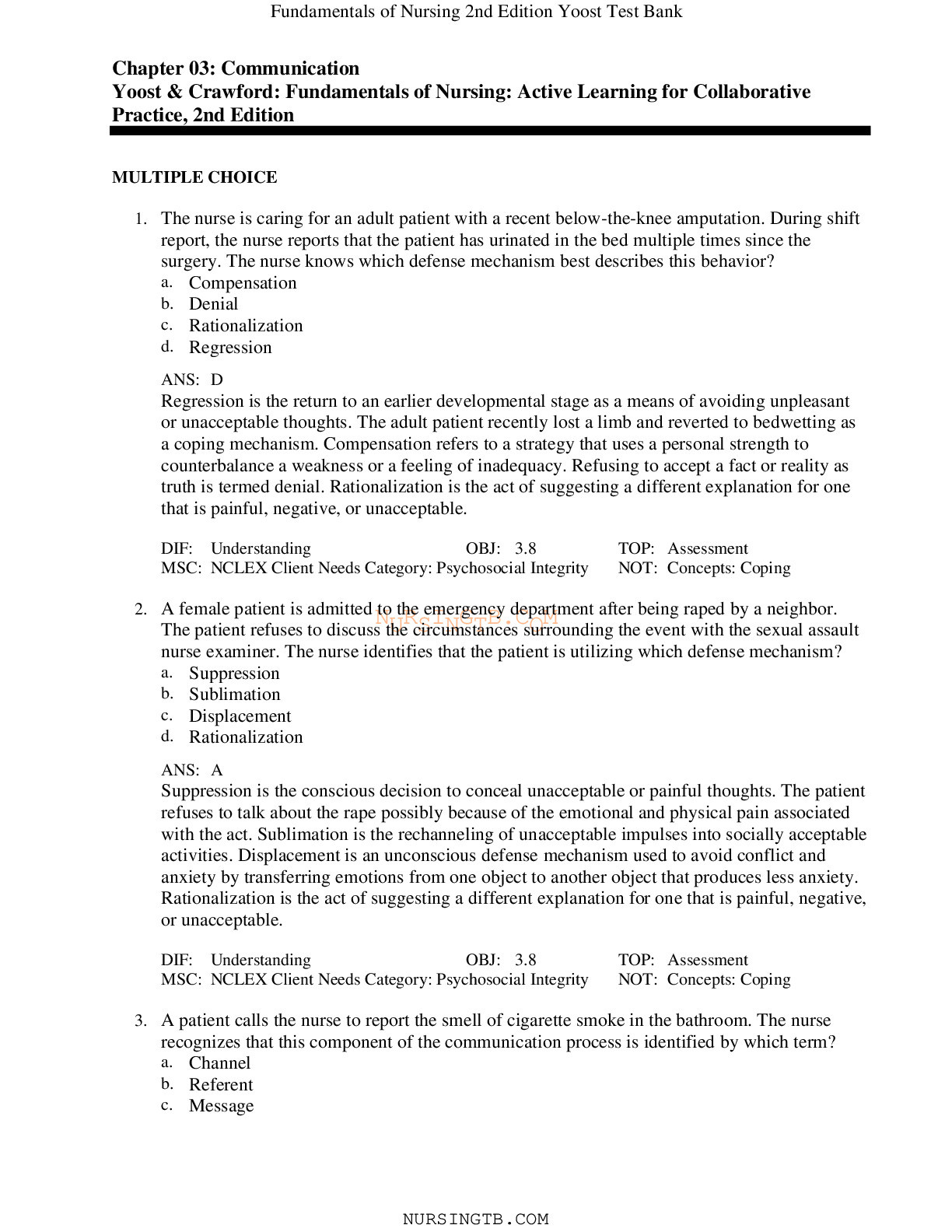All study resources > Chapter 03: Communication Yoost & Crawford: Fundamentals of Nursing: Active Learning for Collaborative Practice, 2nd Edition (Nursing)
Chapter 03: Communication Yoost & Crawford: Fundamentals of Nursing: Active Learning for Collaborative Practice, 2nd Edition
1. The nurse is caring for an adult patient with a recent below-the-knee amputation. During shift
report, the nurse reports that the patient has urinated in the bed multiple times since the
surgery. The nurse knows which defense mechanism best describes this behavior?
a. Compensation
b. Denial
c. Rationalization
d. Regression
2. A female patient is admitted to the emergency department a
...[Show More]
1. The nurse is caring for an adult patient with a recent below-the-knee amputation. During shift
report, the nurse reports that the patient has urinated in the bed multiple times since the
surgery. The nurse knows which defense mechanism best describes this behavior?
a. Compensation
b. Denial
c. Rationalization
d. Regression
2. A female patient is admitted to the emergency department after being raped by a neighbor.
The patient refuses to discuss the circumstances surrounding the event with the sexual assault
nurse examiner. The nurse identifies that the patient is utilizing which defense mechanism?
a. Suppression
b. Sublimation
c. Displacement
d. Rationalization
3. A patient calls the nurse to report the smell of cigarette smoke in the bathroom. The nurse
recognizes that this component of the communication process is identified by which term?
a. Channel
b. Referent
c. Message
d. Feedback
4. The nurse manager sends an e-mail to the nursing staff as a reminder for a scheduled monthly
meeting. In doing so, the nurse manager understands that e-mail could result in which issue?
a. It is usually slower than other methods of communication.
b. It has the potential for miscommunication.
c. It cannot be used to deliver vital information.
d. It is especially effective because of the absence of nonverbal cues.
5. The nursing student has been assigned to help feed patients at lunch time. Which nursing
intervention would be most effective when assisting a blind patient to eat a meal?
a. Speak loudly to ensure that the patient understands.
b. Describe the food arrangement using the numbers on a clock.
c. Tell the patient what is on the plate since he has lost the sense of smell.
d. Encourage the patient to eat faster so that the task will be done.
6. The nurse observes a confused patient pacing back and forth in the dining room. The patient
yells, “The doctor is going to make us all drink poison!” The most appropriate intervention by
the nurse at this time would be to take what action?
a. Ask the patient why he would say something like that.
b. Change the subject to disrupt the patient’s thought process.
c. Tell the patient that he should probably think of something else.
d. Quietly ask the patient to explain the statement.
[Show Less]
